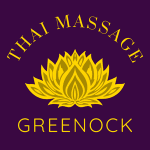Some self-help training and interesting tips on being healthy through Thai Oil Massage.
 Nerd neck. Tech neck. Computer neck. Text neck. Forward head posture.
Nerd neck. Tech neck. Computer neck. Text neck. Forward head posture.
You might not be familiar with these terms, but you almost certainly know what they describe. Picture someone sitting on a bus or park bench looking at their phone. See in your mind’s eye how their head juts forward of their shoulders and droops down? That’s forward head posture.
Before we were all sheltering at home, you couldn’t go out without seeing it everywhere. In coffee shops, restaurants, public transportation, even walking down the street, person after person hunched over their device. That’s not a natural posture for humans, and it’s taking a toll on our collective health.
Nerd neck, tech neck, text neck, and computer neck are interchangeable terms that denote the pain and other symptoms that come from spending too much time in this position. It’s not clear exactly how prevalent it is, but a quick survey of my friends revealed that every single one had experienced neck, shoulder, or back pain that they attributed to spending too much time on their devices. When the Pew Research Center polled American adults last year, 28% said they’re online “almost constantly.” Various surveys estimate the average person spends 3 to 5 hours a day just on their phones. This doesn’t count hours in front of a computer, watching TV, or playing video games. Teens’ and college students’ usage is considerably higher.
All this is to say, tech neck is undoubtedly widespread. I’d bet it’s become even more prevalent in the past few months as people are spending more time at home with their devices.
The good news is that it’s not terribly hard to correct and prevent. A few simple changes, plus easy daily exercises, and you’ll be standing tall once more.
Instantly download your
What Causes Tech Neck?
Many modern activities cause you to pull your head forward and/or look down:
- Using cell phones, desktops, laptops, and tablets
- Reading
- Driving
- Cycling
- Playing video games
Your head weighs somewhere in the neighborhood of 10 to 12 pounds (4.5 to 5.5 kg). Your spine is designed to hold that weight balanced and centered above your shoulders. As you jut your head forward and down, the load on your cervical spine (the vertebrae in your neck) increases. Every inch of forward head posture places an additional 10 pounds of force on the spine. When you look down at a 45-degree angle, your head exerts around 50 pounds of pressure on your cervical spine.
To compensate for the added weight, the muscles in your neck tighten, putting more pressure on the discs between your vertebrae. Eventually, they can bulge or rupture, and then you have much bigger problems.
Forward head posture also pulls your shoulders up and forward, rounding your shoulders and upper back. This leads to upper crossed syndrome, a condition that a doctor or physiotherapist can diagnose. With UCS, you end up with tight pectorals, suboccipitals, upper traps, and levator scapulae; and weak rhomboids, middle/lower traps, and neck flexors. In addition to pain, joint dysfunction, and even numbness, the misalignment can also cause your pelvis to tilt, affecting the entire posterior chain. While it all starts with the head and neck, forward head posture leads to all sorts of issues if not addressed.
Symptoms of Tech Neck
Symptoms of tech neck include:
- Pain or tightness in the neck, shoulders, upper back, or chest
- Weakness in the neck
- Restricted movement through the neck or shoulders
- Headaches
- Jaw pain
- Numbness or tingling in the upper arms
Do You Have Tech Neck?
If you have any degree of neck pain, especially if it’s worse after using your computer or phone, you probably have some degree of tech neck. Frankly, I’d venture to guess that almost everyone does nowadays.
Here are two easy tests you can do at home:
1) Have a friend take a picture of you from the side, standing in your normal, comfortable position. Look at where your ear is relative to your shoulder. It should be directly above the middle of your shoulder. For many people, the ear will be slightly—or considerably—in front of that midline. Also ask your friend to photograph you using your phone or computer.
2) Stand with your back to a wall, feet shoulder-width apart. Slightly pinch your shoulder blades together and try to get them to touch the wall without arching your back. Visualize lengthening your neck, reaching the crown of your head toward the ceiling. Then, try to reach the back of your head to the wall. Can it touch? Does it feel at all difficult or unnatural? Some people with severe forward neck posture and UCS won’t be able to bring their heads back at all.
How to Fix Forward Head Posture
To fix forward head posture, you must do two things: correct existing posture issues, and take steps to avoid putting yourself in the same position in the future.
Remedies for Tech Neck
First, the necessary disclaimer: If you’re having pain, the below exercises cause you any pain, or you have other head, neck, or shoulder problems, talk to your doctor or physical therapist before proceeding.
Here are four exercises you can do at home. Even though they seem simple, you may need time to work up to them depending on your current posture. It’s helpful to have someone watch you do these exercises to tell you if you are in the proper position. Have them take pictures so you can see how you look and to track your progress.
1. Chin tucks
- Sit or stand straight—no slouching.
- Gently tuck your chin so you’re looking straight ahead.
- Move your head back without tipping your chin up. Imagine you have a ponytail in the middle-back of your head, and someone pulled it straight back.
- Hold this position for 3 to 5 seconds. Repeat up to 10 times. Do 2 to 3 sets.
- Variation: Place two fingers on your chin and apply gentle pressure as you pull back your head.
2. Isometric contraction
- Once you feel what it’s like to move your head back using the chin tuck exercise, try this one.
- Interlace your fingers.
- Looking straight ahead, place your hands behind your head with your elbows pointing out to the sides.
- Do the same chin tuck as above, then gently press your head back into your hands. Hold your hands steady to provide resistance. Hold this position for 3 to 5 seconds. Do 2 to 3 sets of 5 to 10 repetitions each
3. Wall sits
- Stand with your back against a wall. Walk your feet out about 12 inches and slightly bend your knees. Don’t get too low. This isn’t a quad exercise.
- Make sure your lower, mid, and upper back are all touching the wall—no arching.
- Do the chin tuck exercise and, looking straight ahead, gently pull your head straight back toward the wall. The back of your head should touch, not the crown. If it doesn’t quite touch, hold it at your point of tension.
- Hold for 2 to 3 minutes. Repeat a few times per day.
- Variation: Do this exercise sitting on the floor with legs extended.
4. Wall angels
- Stand with your back against a wall.
- Move your head straight back so the middle-back of your head is touching the wall.
- Bend your elbows and raise your arms to shoulder height. Place your arms flat against the wall with your thumbs pointed toward your ears. This position is also called “goalpost arms” or “cactus arms.”
- Slowly raise and lower your arms like you’re doing jumping jacks, keeping your elbows bent and the back of your hands on the wall.
- Do this for 30 seconds or until your arms feel fatigued.
Do these exercises throughout the day. It might take a few weeks or even months to remediate your tech neck. Stick with it. If you don’t see improvement, make an appointment with a chiropractor or physical therapist.
Avoiding Nerd Neck In the Future
The above exercises can help you fix existing misalignment and relieve pain. Just as importantly, you must address the root causes.
First things first, stop looking down to use your devices. That means:
- Hold your phone in front of your face rather than in your lap. Yes, you’ll look nerdier doing that, but your neck will thank you.
- Elevate your computer monitor so it is at eye level. Laptop users might want to invest in a separate keyboard so they can elevate their laptops and still type comfortably.
- Use a desk chair that reclines 25 to 30 degrees and supports the back of your head.
- Consider standing desks and ergonomic workstations designed for this issue.
Limit your screen time and take frequent breaks. You should be doing this anyway. Set alarms on your phone or use a Pomodoro app that reminds you to stand up and move at least every 30 minutes. This is the perfect time to do some neck exercises and stretches.
Keep your neck and shoulders mobile using exercises such as:
- Yoga poses, like cat-cow, downward dog, and cobra
- Shoulder rolls
- Turn your head side to side, nod up and down, and do gentle neck circles
Other things that make neck pain worse are carrying heavy backpacks and sleeping on pillows that bend your neck too far.
Primal Movements
You know we’re doing something unnatural with our bodies when tech neck is even a thing. I know our phones and computers aren’t going anywhere, nor would I want them to. (Don’t underestimate the tremendous power of totally unplugging once in a while, though.) Since devices are here to stay, we should all work on finding ways to use them that don’t wreck our bodies.
With that in mind, I’ll end by putting in a plug for Primal movement practices. The Primal Essential Movements—, , , and —offer full-body movements that promote strength, mobility, and flexibility.
Engaging in low-key aerobic exercises, especially walking, is great for overall health and increasing circulation. Moving through different archetypal rest postures throughout your workday challenges your body and prevents the imbalances and injuries that come from staying in the same position day in and day out. Being sedentary is a killer.
My hypothesis is that if everyone started incorporating these practices into their daily routine, maybe through microworkouts, tech neck would be much less prevalent. We’ve certainly got nothing to lose by trying.
(function($) {
$(“#dfTD2ZN”).load(“https://www.marksdailyapple.com/wp-admin/admin-ajax.php?action=dfads_ajax_load_ads&groups=674&limit=1&orderby=random&order=ASC&container_id=&container_html=none&container_class=&ad_html=div&ad_class=&callback_function=&return_javascript=0&_block_id=dfTD2ZN” );
})( jQuery );
References
- https://www.handspringpublishing.com/product/physiology-of-the-joints-volume-3/
The post appeared first on .
The above article Do You Have Tech Neck, or Nerd Neck? How to Fix Forward Head Posture was provided on this site.
We hope that you found the article above of help and/or of interest. Similar content can be found on our blog thaimassagegreenock.co.uk.
Please let me have your feedback below in the comments section.
Let us know what topics we should write about for you next.
Thai Massage Newsletter
To make sure you don’t miss out on any new posts or promotions that we introduce, sign up for our newsletter.
Once a month we run a special promotion for our newsletter members, so sign up now to make sure you don’t miss out.
It’s free and full of great health and nutrition tips and advice on how we can help you achieve your health and fitness goals.





